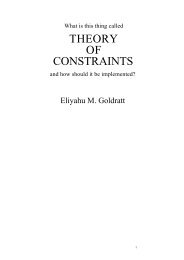Making of a German Constitution : a Slow Revolution
Making of a German Constitution : a Slow Revolution
Making of a German Constitution : a Slow Revolution
Create successful ePaper yourself
Turn your PDF publications into a flip-book with our unique Google optimized e-Paper software.
62 • The <strong>Making</strong> <strong>of</strong> a <strong>German</strong> <strong>Constitution</strong>our scope and consider not only his life and times, but the medley <strong>of</strong> legal thoughtand its politics that influenced him.Finally, this chapter challenges the received interpretation <strong>of</strong> Savigny’s place in<strong>German</strong> legal and political historiography, which, despite some revision, continuesto be tainted by notions <strong>of</strong> <strong>German</strong> misdevelopment. As discussed in the last chapter,political thought for as far back as the Papal <strong>Revolution</strong> had been organized aroundjuridical concepts and reflected a dual conception <strong>of</strong> law, which expressed the ideathat law could also be used as a means to political revision. Savigny’s theory <strong>of</strong>politics and modern legislation was an expression <strong>of</strong> traditional <strong>German</strong> values. Hisinsistence on nonviolent means was drawn from the individual <strong>German</strong> tradition <strong>of</strong>peaceful political transformation through legal reformatio, which had been passeddown since at least the Reformation. The <strong>German</strong> tradition emphasized the peacefulresolution <strong>of</strong> domestic disputes through judicial means. This was a pillar <strong>of</strong> <strong>German</strong>constitutionalism in the eighteenth century, as discussed in the last chapter. Inthe aftermath <strong>of</strong> twenty-two years <strong>of</strong> violent revolutionary wars, nonviolent politicaltransformation was far more appealing than violent revision. Particular attentionshould be paid to the fact that this was not only the longest conflict since the ThirtyYears War, but the standard <strong>of</strong> violent political revision also produced revolutionarybloodshed beyond Europe in both the French and Spanish colonies in the Americas.The goal <strong>of</strong> this chapter, thus, is to reposition Savigny as one the early leading minds<strong>of</strong> an individual <strong>German</strong> tradition <strong>of</strong> inverted constitutionalism and situate him as anonviolent constitutional transformationist.BiographyIt would be impossible to discern or appreciate Savigny’s constitutionalism withoutfirst understanding his personal history. This biographical information is importantbecause it is the first indicator that he could not have been a reactionary conservative.Savigny was a member <strong>of</strong> the nobility in name only, and was not ‘an aristocrat[who] brought honor to the teaching <strong>of</strong> Roman law’ as Whitman suggests. 30 The deSavignys were early Calvinists in the Lorraine region <strong>of</strong> Catholic France, and Savignywas acutely aware <strong>of</strong> the persecution that his forebears experienced during thebloody Wars <strong>of</strong> Religion. 31 The Edict <strong>of</strong> Nantes (1598) <strong>of</strong>fered only temporary andtenuous security for Huguenots, guaranteeing limited civil liberties to Protestant minorities.These included towns <strong>of</strong> safety, the right to hold public <strong>of</strong>fice, trial in courtsbefore Protestant judges, and liberty <strong>of</strong> educational and pr<strong>of</strong>essional pursuits. Withthe coronation <strong>of</strong> Louis XIV, however, anti-Protestantism again became an <strong>of</strong>ficialpolicy in France. The Edict <strong>of</strong> Nantes was reduced to a scrap <strong>of</strong> paper and, then,completely revoked by the Edict <strong>of</strong> Fontainbleu in 1685. It went so far as to ruthlesslyblock <strong>of</strong>f emigration for Protestants wishing to leave France. In 1677 the home<strong>of</strong> Savigny’s paternal forebears, who had lived in relative prosperity, was burned




